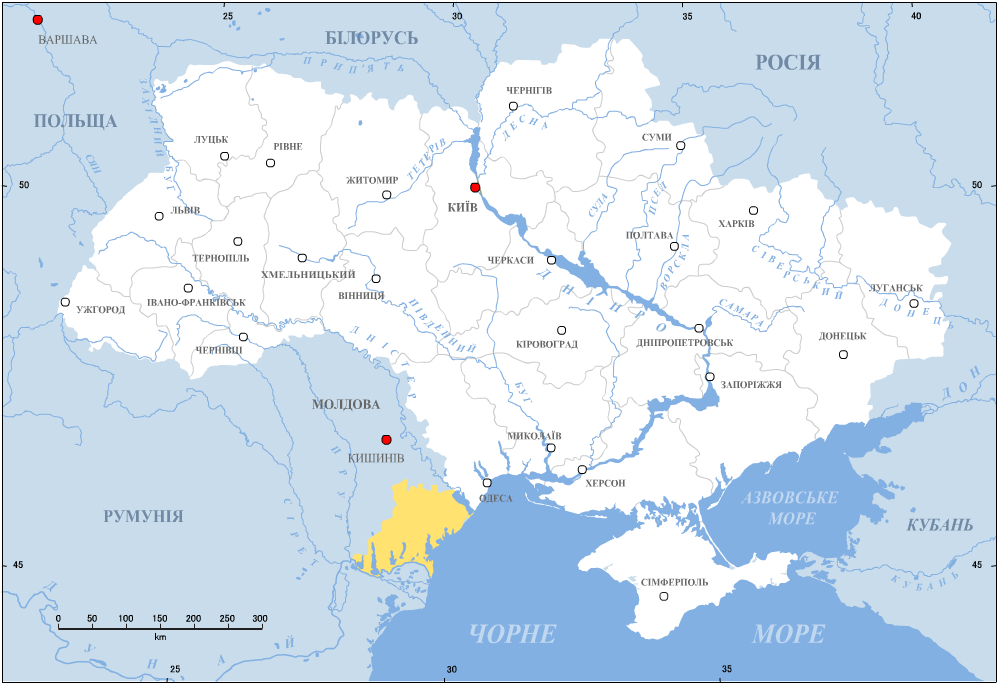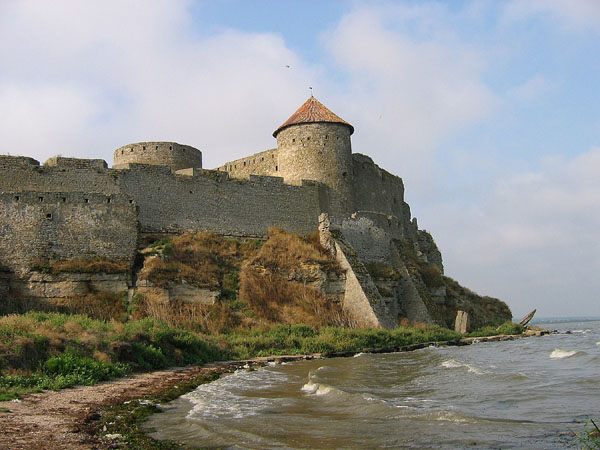|
Cogâlnic River
The Cogâlnic (also Cogîlnic, Kogylnik, Kogîlnic, Kohylnyk, or Kunduk) is a 243 km river in Moldova and south-western Ukraine. The Cogâlnic rises in the hills of Nisporeni District in the Codri region west of the Moldovan capital, Chișinău. It flows through the cities of Hîncești, Cimișlia and Basarabeasca, and then into the Budjak, past Artsyz and into the Prichernomorskoy lowlands of the Odessa Oblast (province) of Ukraine. Together with the Sarata River it enters the Sasyk Liman and thence into the Black Sea The Black Sea is a marginal mediterranean sea of the Atlantic Ocean lying between Europe and Asia, east of the Balkans, south of the East European Plain, west of the Caucasus, and north of Anatolia. It is bounded by Bulgaria, Georgia, Rom .... History Johann Thunmann in his eighteenth century work described it: :In warm months, there is a great shortage of water. Even the largest river in this area, the Kogylnik, then dries, and it is often due to lac ... [...More Info...] [...Related Items...] OR: [Wikipedia] [Google] [Baidu] |
Sarata Raion
Sarata Raion ( uk, Саратський район) was a raion (district) in Odessa Oblast of Ukraine. It was part of the historical region of Bessarabia. Its administrative center was the urban-type settlement of Sarata. The raion was abolished and its territory was merged into Bilhorod-Dnistrovskyi Raion on 18 July 2020 as part of the administrative reform of Ukraine, which reduced the number of raions of Odessa Oblast to seven. The last estimate of the raion population was References Former raions of Odessa Oblast 1965 establishments in Ukraine Ukrainian raions abolished during the 2020 administrative reform {{Odessa-geo-stub ... [...More Info...] [...Related Items...] OR: [Wikipedia] [Google] [Baidu] |
Budjak
Budjak or Budzhak (Bulgarian and Ukrainian: Буджак; ro, Bugeac; Gagauz and Turkish: ''Bucak''), historically part of Bessarabia until 1812, is a historical region in Ukraine and Moldova. Lying along the Black Sea between the Danube and Dniester rivers, this sparsely populated multi-ethnic 600,000-people region of is located in the southern part of historical Bessarabia. Nowadays, the larger part of the region is included in Ukraine's Odesa Oblast, while the rest is included in the southern districts of Moldova. The region is bordered to the north by the rest of Moldova, to the west and south by Romania, and to the east by the Black Sea and the rest of Ukraine. Name and geography Historically, Budjak was the southeastern steppe region of Moldavia. Bordered by the northern Trajan's Wall at its north end, by the Danube river and Black Sea to its south, by Tigheci Hills (just east of the Prut River) to the west, and Dniester River to the east, it was known as ''histori ... [...More Info...] [...Related Items...] OR: [Wikipedia] [Google] [Baidu] |
Rivers Of Moldova
The largest rivers of Moldova include: References {{List of rivers of Europe Moldova Moldova ( , ; ), officially the Republic of Moldova ( ro, Republica Moldova), is a landlocked country in Eastern Europe. It is bordered by Romania to the west and Ukraine to the north, east, and south. The unrecognised state of Transnistr ... Rivers ... [...More Info...] [...Related Items...] OR: [Wikipedia] [Google] [Baidu] |
Rivers Of Odesa Oblast
A river is a natural flowing watercourse, usually freshwater, flowing towards an ocean, sea, lake or another river. In some cases, a river flows into the ground and becomes dry at the end of its course without reaching another body of water. Small rivers can be referred to using names such as creek, brook, rivulet, and rill. There are no official definitions for the generic term river as applied to geographic features, although in some countries or communities a stream is defined by its size. Many names for small rivers are specific to geographic location; examples are "run" in some parts of the United States, "burn" in Scotland and northeast England, and "beck" in northern England. Sometimes a river is defined as being larger than a creek, but not always: the language is vague. Rivers are part of the water cycle. Water generally collects in a river from precipitation through a drainage basin from surface runoff and other sources such as groundwater recharge, springs ... [...More Info...] [...Related Items...] OR: [Wikipedia] [Google] [Baidu] |
Black Sea
The Black Sea is a marginal mediterranean sea of the Atlantic Ocean lying between Europe and Asia, east of the Balkans, south of the East European Plain, west of the Caucasus, and north of Anatolia. It is bounded by Bulgaria, Georgia, Romania, Russia, Turkey, and Ukraine. The Black Sea is supplied by major rivers, principally the Danube, Dnieper, and Don. Consequently, while six countries have a coastline on the sea, its drainage basin includes parts of 24 countries in Europe. The Black Sea covers (not including the Sea of Azov), has a maximum depth of , and a volume of . Most of its coasts ascend rapidly. These rises are the Pontic Mountains to the south, bar the southwest-facing peninsulas, the Caucasus Mountains to the east, and the Crimean Mountains to the mid-north. In the west, the coast is generally small floodplains below foothills such as the Strandzha; Cape Emine, a dwindling of the east end of the Balkan Mountains; and the Dobruja Plateau considerably farth ... [...More Info...] [...Related Items...] OR: [Wikipedia] [Google] [Baidu] |
Sasyk Liman
__NOTOC__ Sasyk, or Kunduk ( uk, Сасик, Кундук – transcribed as previous, ro, Limanul Sasic, Conduc, tr, Sasık Gölü, Kunduk Gölü), is a lagoon or liman in southern Ukraine, near the Danube Delta. It is a Ramsar listed wetland site important for migrating, breeding and moulting birds. About 25,000 pairs of wetland birds make their nests there and seasonal conglomerations of birds are up to 100,000 individuals. The area of the lagoon is 215 km2, and the depth up to 3.3 m. Until 1978 the lagoon was separated into two parts: northern brackishwater area, including the rivers Cogâlnic and Sarata, and a southern marine area. The lagoon was separated from the sea by a 0.5 km wide sandbar. Dam and reduced salinity In 1978 a concrete dam was built on the sandbar and the lagoon was connected to the Danube River by a canal, through which fresh flood waters come. This has adversely changed the salinity in the lake, and this plus disturbances from recreat ... [...More Info...] [...Related Items...] OR: [Wikipedia] [Google] [Baidu] |
Sarata River
Sarata ( uk, Сарата, Sarata, ro, Sărata) is a river in Ukraine and Moldova, which discharges into the Sasyk Lagoon. The river originates in the territory of Moldova Moldova ( , ; ), officially the Republic of Moldova ( ro, Republica Moldova), is a Landlocked country, landlocked country in Eastern Europe. It is bordered by Romania to the west and Ukraine to the north, east, and south. The List of states .... Length 120 km. Area of watershed 1 250 km2. In summer it dries up. The river has tributaries: Babei, Gealair, Copceac. Rivers of Odesa Oblast Rivers of Moldova International rivers of Europe {{Ukraine-river-stub ... [...More Info...] [...Related Items...] OR: [Wikipedia] [Google] [Baidu] |
Odessa Oblast
Odesa Oblast ( uk, Оде́ська о́бласть, translit=Odeska oblast), also referred to as Odeshchyna ( uk, Оде́щина) is an administrative divisions of Ukraine, oblast (province) of southwestern Ukraine, located along the northern coast of the Black Sea. Its administrative centre is the city of Odesa ( uk, Одеса). Population: The length of coastline (sea-coast and estuaries) reaches , while the state border stretches for .Tell about Ukraine. Odessa Oblast 24 Kanal (youtube). The region has eight seaports, over of vineyards, and five of the biggest lakes in Ukraine. One of the largest, Yalpuh Lake, is as large as the city of Odesa itself. History Evidence of the earliest inhabitants in this area comes from the settlements a ...[...More Info...] [...Related Items...] OR: [Wikipedia] [Google] [Baidu] |
Artsyz
Artsyz (, ; bg, Арциз ''Artsiz''; ; or ''Arsız''; or ''Arzis'') is a city and the administrative center of Artsyz municipality, Bolhrad Raion in Odesa Oblast, Ukraine. Population: In 2001, population was 16,370. History The city was founded in 1816 by German colonists from Swabia and the just dissolved Duchy of Warsaw and was named after the Battle of Arcis-sur-Aube. Artsyz was bombed on 3 May 2022 by Russian forces during the Russian invasion of Ukraine On 24 February 2022, in a major escalation of the Russo-Ukrainian War, which began in 2014. The invasion has resulted in tens of thousands of deaths on both sides. It has caused Europe's largest refugee crisis since World War II. An .... References Cities in Odesa Oblast Cities of district significance in Ukraine Former German settlements in Odesa Oblast 1816 establishments in the Russian Empire Populated places established in the Russian Empire Akkermansky Uyezd Cetatea Albă County Bolh ... [...More Info...] [...Related Items...] OR: [Wikipedia] [Google] [Baidu] |
Basarabeasca
Basarabeasca (, Russian: Басарабяска; Bulgarian: Бесарабка, ''Besarabka'') is a city in Moldova. It is the capital of Basarabeasca District. Geography The city, formerly an urban-type settlement, is located on the border with Ukraine. It is 94 km to the south of the national capital Chişinău, 25 km from Cimislia, and 25 km from Comrat. The river Cogâlnic flows through the city from northwest to southeast, continuing on to the Black Sea. The main populated areas are in the lowlands. These are effectively divided into several areas, such as Romanovka and Flemynda. History A Jewish settlement at the site of Basarabeasca was started in 1846; it was originally named Romanovka in honor of the Russian imperial family of the Romanovs. In 1859 there were 86 resident Jewish families who worked the land, 263 men and 249 women. They owned 1750 ''desyatinas'' of farmland. At the time of the abolition of Jewish land tenure in 1866, 57 families were occu ... [...More Info...] [...Related Items...] OR: [Wikipedia] [Google] [Baidu] |
Nisporeni District
Nisporeni () is a district ( ro, raion) in west-central Moldova, with its administrative center at Nisporeni. According to the 2014 census, its population was 53,154; most (82.8 percent) are Moldovans. History The Vărzărești monastery was first mentioned on 25 April 1420. The oldest locations in the district ( Bălăurești, Ciutești, Seliște, Nisporeni and Vărzărești) were first mentioned in 1420-1425. The 15th to 18th centuries were marked by economic (trade and agriculture) and cultural development (the construction of monasteries and churches) and population growth. The city of Nisporeni was first mentioned by Gaspar Graziani in his book dated 4 January 1618. According to Graziani, at that time Nisporeni was ruled by Farima Nicolae II, descendant of the Farima dynasty and cousin of Michael the Brave. Nicolae II is one of Moldova's national heroes. Local people were primarily involved in farming (grapes and other fruit) and hunting. In 1812, after the Russo-Turkish W ... [...More Info...] [...Related Items...] OR: [Wikipedia] [Google] [Baidu] |
Cimișlia
Cimișlia () is a town located in the southern part of Moldova situated on the banks of the Cogâlnic River, between the capital of Chișinău and the autonomous territorial unit of Gagauzia ( ro, Găgăuzia). Cimişlia had a population of 11,997 according to the 2014 census. The town is also the seat/administrative center ( ro, Oraș-reședință) of Cimișlia District. It also administers three villages s follows: Bogdanovca Nouă, Bogdanovca Veche, and Dimitrovca. History The first written mention of Cimişlia dates from 4 July 1620, when the savant Vladimir Nicu explained that a local legend had given the town its name from an unknown origin word meaning "wealth". The priest Iacob Iusipescu, who made the first attempt at a written history of Cimişlia in 1874, explained that in fact it was a word of unknown origin, but ''cimiş'' was the name given to construction workers and bricklayers at that time, used by Romanian and Tatar alike. The basis for the name might also ... [...More Info...] [...Related Items...] OR: [Wikipedia] [Google] [Baidu] |





